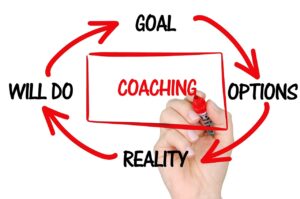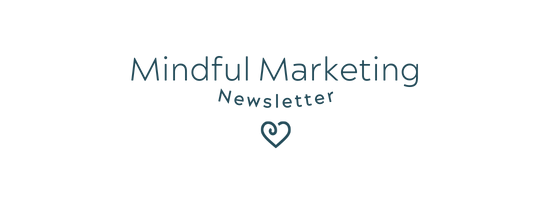In today’s fast-paced and competitive business world, the ability to think creatively and foster originality is more critical than ever. Enter creative coaching—the art of unlocking untapped potential and inspiring innovation. Whether you’re a leader looking to ignite the imaginations of your team or an individual seeking to tap into your own creative reserves, this article will guide you through effective strategies to unleash your creative genius.
Through a combination of research-backed techniques and real-life examples, we’ll explore how creative coaching can enhance problem-solving skills, encourage new ways of thinking, and nurture a culture of innovation. From brainstorming exercises to visualization techniques, we’ll uncover practical methods for stimulating creativity and breaking through mental barriers.
So, whether you’re a marketing director searching for fresh marketing campaign ideas or an aspiring artist seeking inspiration, this article will equip you with the tools to unleash your imagination and tap into your unique creative potential. Get ready to unleash your inner artist, thinker, innovator, and problem-solver through the art of creative coaching. Let’s dive in!
Table of Contents
ToggleUnderstanding the role of a creative coach
Creative coaching is a specialized form of coaching that focuses on nurturing and developing an individual’s creative abilities. A creative coach acts as a guide, mentor, and motivator, helping individuals tap into their inner creativity and unlock their unique talents. Unlike traditional coaching, which often focuses on goal-setting and accountability, creative coaching goes beyond that to encourage originality and innovation.
A creative coach understands the importance of creating a safe and supportive environment for their clients. They provide a non-judgmental space where ideas can flow freely, and individuals can explore their creative potential without fear of criticism. By asking thought-provoking questions and providing constructive feedback, a creative coach helps individuals gain a deeper understanding of their creative process and discover new ways to express themselves.
Creative coaching is not limited to artists or musicians. It can benefit individuals across various fields, from business professionals looking to develop innovative solutions to entrepreneurs aiming to launch groundbreaking products. By embracing the role of a creative coach, individuals can unlock their imagination and bring fresh perspectives to their work.
Benefits of creative coaching
The benefits of creative coaching are numerous and can have a profound impact on both individuals and organizations. One of the primary benefits is the enhancement of problem-solving skills. Creative coaching encourages individuals to think outside the box, challenge conventional thinking, and approach problems from different angles. This ability to think creatively and generate innovative solutions is invaluable in today’s rapidly changing world.
Another benefit of creative coaching is the cultivation of new ways of thinking. By exploring different perspectives and pushing boundaries, individuals can break free from routine and tap into their creative reserves. This not only leads to more imaginative ideas but also fosters a mindset of continuous learning and growth.
Creativity is often associated with originality, and creative coaching helps individuals develop their unique voice and style. By encouraging self-expression and experimentation, a creative coach empowers individuals to embrace their authenticity and bring their original ideas to life. This not only enhances personal fulfillment but also contributes to a culture of innovation within organizations.
Techniques to ignite imagination
Igniting the imagination is a key aspect of creative coaching. By tapping into the power of imagination, individuals can envision new possibilities and overcome mental barriers. Here are some techniques that can help ignite the imagination:
1. Brainstorming
Brainstorming is a classic technique that encourages individuals to generate a multitude of ideas without judgment. By creating a safe space for free thinking, a creative coach can inspire individuals to think creatively and come up with innovative solutions. To maximize the effectiveness of brainstorming sessions, it’s important to set clear goals, encourage active participation, and record all ideas without evaluation.
2. Visualization
Visualization is a powerful technique that involves creating vivid mental images of desired outcomes. By visualizing success and imagining the steps needed to achieve it, individuals can tap into their imagination and unlock their creative potential. A creative coach can guide individuals through visualization exercises, helping them see beyond current limitations and envision a future where anything is possible.
3. Mind Mapping
Mind mapping is a visual technique that helps individuals organize their thoughts and explore connections between ideas. By creating a visual representation of concepts, individuals can stimulate their imagination and uncover new insights. A creative coach can facilitate mind mapping exercises, guiding individuals to connect seemingly unrelated ideas and discover innovative solutions.
These techniques are just a few examples of the many ways to ignite imagination. The key is to encourage individuals to embrace their creativity, experiment with different techniques, and explore new possibilities. By nurturing the imagination, a creative coach can help individuals unlock their full creative potential.
Tools for fostering originality
Fostering originality is an essential aspect of creative coaching. It involves encouraging individuals to embrace their unique perspectives, challenge the status quo, and think outside the box. Here are some tools that can help foster originality:
1. Divergent Thinking
Divergent thinking is the ability to generate multiple solutions to a problem. By encouraging individuals to explore various possibilities and challenge assumptions, a creative coach can foster originality. This can be done through exercises that promote unconventional thinking, such as “What if” scenarios or role-playing activities.
2. Creative Constraints
Creative constraints are limitations that can actually enhance creativity. By imposing constraints, such as time limits or specific parameters, a creative coach can encourage individuals to think creatively within those boundaries. This can lead to innovative solutions and a fresh approach to problem-solving.
3. Exposure to New Experiences
Exposing individuals to new experiences can broaden their perspectives and inspire original thinking. A creative coach can encourage individuals to explore different industries, attend workshops or conferences, or engage in activities outside their comfort zone. These experiences can spark new ideas and encourage individuals to think creatively.
Fostering originality requires creating an environment that values and celebrates uniqueness. A creative coach plays a crucial role in nurturing and supporting individuals as they develop their original ideas. By providing guidance, encouragement, and feedback, a creative coach can help individuals embrace their originality and bring their unique contributions to the world.
Setting goals and objectives in creative coaching
While creative coaching is primarily focused on nurturing creativity, it is still important to set goals and objectives. Clear goals provide individuals with direction and purpose, while objectives help measure progress and success. Here are some strategies for setting goals and objectives in creative coaching:
1. SMART Goals
SMART is an acronym for Specific, Measurable, Achievable, Relevant, and Time-bound. When setting goals, it’s important to make them specific and measurable, ensuring individuals have a clear target to strive for. Goals should also be achievable and relevant to the individual’s aspirations and creative development. Lastly, goals should have a defined timeline to create a sense of urgency and accountability.
2. Break Goals into Milestones
Breaking larger goals into smaller, achievable milestones can help individuals stay motivated and track their progress. By celebrating milestones along the way, individuals can maintain momentum and feel a sense of accomplishment. This approach also allows for adjustments and course corrections if needed.
3. Align Goals with Values and Passion
To foster genuine motivation and commitment, goals should align with an individual’s values and passion. When individuals are pursuing goals that resonate with their core beliefs and interests, their creative energy is amplified, and they are more likely to reach their full potential.
Setting goals and objectives in creative coaching ensures that individuals have a clear direction and roadmap for their creative journey. By aligning goals with values, breaking them into milestones, and using the SMART framework, individuals can maximize their creative potential and achieve their desired outcomes.
Nurturing creativity in a coaching relationship
Nurturing creativity in a coaching relationship involves creating a safe and supportive environment where individuals feel encouraged to explore their creative potential. Here are some strategies for nurturing creativity in a coaching relationship:
Active Listening:
Active listening is a fundamental skill for any coach. By truly hearing and understanding individuals’ ideas, concerns, and aspirations, a creative coach can create a space for open dialogue. Active listening involves giving individuals undivided attention, asking clarifying questions, and providing thoughtful responses.
Empathy and Understanding:
Creativity often requires vulnerability and taking risks. A creative coach should cultivate empathy and understanding to create a safe space where individuals feel comfortable expressing themselves. By validating individuals’ experiences and emotions, a creative coach can nurture their creativity and help them overcome self-doubt.
Encourage Experimentation and Play:
Creativity thrives in an environment that encourages experimentation and playfulness. A creative coach can inspire individuals to approach their creative process with curiosity and a sense of adventure. By encouraging them to explore new ideas, take risks, and embrace failure as a learning opportunity, a creative coach can help individuals unlock their full creative potential.
Nurturing creativity in a coaching relationship requires trust, respect, and a genuine commitment to individuals’ growth and development. By actively listening, cultivating empathy, and encouraging experimentation, a creative coach can create a transformative coaching relationship that sparks creativity and fosters originality.
Overcoming creative blocks and self-doubt
Creative blocks and self-doubt are common obstacles that individuals encounter on their creative journey. These challenges can hinder creativity and prevent individuals from reaching their full potential. Here are some strategies for overcoming creative blocks and self-doubt:
1. Identify and Acknowledge Blocks: The first step in overcoming creative blocks is to identify and acknowledge them. By recognizing the specific challenges or barriers that are impeding creativity, individuals can begin to address them. This may involve exploring underlying fears, limiting beliefs, or external factors that are contributing to the block.
2. Practice Self-Compassion: Self-compassion is crucial when facing creative blocks and self-doubt. Individuals should remind themselves that creative blocks are a natural part of the creative process and that self-doubt is common, even among the most accomplished individuals. By treating themselves with kindness and understanding, individuals can cultivate a positive mindset and navigate through creative blocks more effectively.
3. Seek Inspiration and Support: Seeking inspiration from various sources can help individuals overcome creative blocks and self-doubt. This may involve exploring different art forms, reading books, attending workshops, or connecting with other creative individuals. Additionally, seeking support from a creative coach or joining a creative community can provide encouragement and accountability.
Overcoming creative blocks and self-doubt requires patience, perseverance, and a willingness to embrace vulnerability. By identifying and acknowledging blocks, practicing self-compassion, and seeking inspiration and support, individuals can break through barriers and unleash their creative potential.
Conclusion and next steps
The art of creative coaching is a powerful tool for unlocking untapped potential and fostering originality.
Creative coaches empower individuals to tap into their unique creative potential by guiding individuals through:
- effective strategies to ignite imagination
- fostering originality
- setting goals and objectives
- nurturing creativity
- and overcoming creative blocks.
If you’re inspired by the art of creative coaching and want to become a creative coach yourself, there are several next steps you can take. Consider pursuing training and certification programs that specialize in creative coaching.
Looking to hire a Creative Coach for yourself? Book a free strategy call here.






